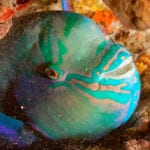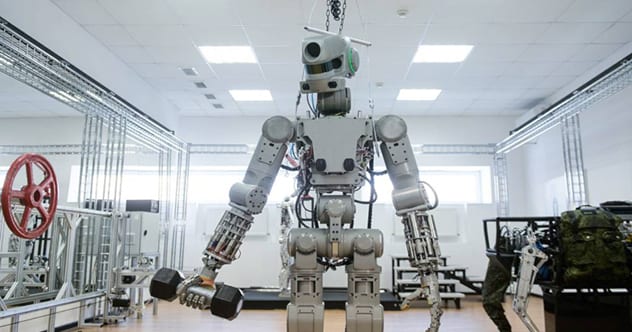 Movies and TV
Movies and TV  Movies and TV
Movies and TV  History
History 10 Things You Didn’t Know About the American National Anthem
 Technology
Technology Top 10 Everyday Tech Buzzwords That Hide a Darker Past
 Humans
Humans 10 Everyday Human Behaviors That Are Actually Survival Instincts
 Animals
Animals 10 Animals That Humiliated and Harmed Historical Leaders
 History
History 10 Most Influential Protests in Modern History
 Creepy
Creepy 10 More Representations of Death from Myth, Legend, and Folktale
 Technology
Technology 10 Scientific Breakthroughs of 2025 That’ll Change Everything
 Our World
Our World 10 Ways Icelandic Culture Makes Other Countries Look Boring
 Misconceptions
Misconceptions 10 Common Misconceptions About the Victorian Era
 Movies and TV
Movies and TV The 10 Coolest Stars to Set Sail on The Love Boat
 History
History 10 Things You Didn’t Know About the American National Anthem
 Technology
Technology Top 10 Everyday Tech Buzzwords That Hide a Darker Past
Who's Behind Listverse?

Jamie Frater
Head Editor
Jamie founded Listverse due to an insatiable desire to share fascinating, obscure, and bizarre facts. He has been a guest speaker on numerous national radio and television stations and is a five time published author.
More About Us Humans
Humans 10 Everyday Human Behaviors That Are Actually Survival Instincts
 Animals
Animals 10 Animals That Humiliated and Harmed Historical Leaders
 History
History 10 Most Influential Protests in Modern History
 Creepy
Creepy 10 More Representations of Death from Myth, Legend, and Folktale
 Technology
Technology 10 Scientific Breakthroughs of 2025 That’ll Change Everything
 Our World
Our World 10 Ways Icelandic Culture Makes Other Countries Look Boring
 Misconceptions
Misconceptions 10 Common Misconceptions About the Victorian Era
Top10 Absurd Scientific Experiments And Discoveries
Scientists can be a strange bunch of people. Some scour for answers to some of the great mysteries of the universe, or work towards cutting-edge technological breakthroughs. Others give cannabis to traumatized elephants and fit cuttlefish with 3D glasses.
Scientists are responsible for all manner of bizarre, off-the-wall discoveries. In recent months, researchers have, for example, created iridescent chocolate, built an artificial sun and studied the effects of mixing Coke and Mentos on top of a mountain. Here are ten of the weirdest discoveries.
10 Psychological Experiments That Will Blow Your Mind
10 Levitating Boat Floats Upside Down
Scientists in France have achieved a remarkable feat of science, getting a toy boat to float upside down along a layer of liquid suspended in air. According to Emmanuel Fort, researchers at the Higher School of Industrial Physics and Chemistry in Paris were playing about with their equipment when they essentially stumbled upon this striking phenomenon. As he told reporters, “we had no idea it would work.”
Held in position by a delicate balance of forces and vibrations, the boat appears to defy gravity. This bizarre effect allows the toy to sail the wrong way round on the underside of a layered mix of glycerol and silicon oil.
At the time the team were investigating the effects of certain vibrations on the behavior of water. With the right frequencies bubbles can be made to float down, and heavy object can be stopped from sinking.[1]
9 Iridescent Chocolate
Sparkling rainbow chocolate sounds like something out of Willy Wonka’s chocolate factory. But now, thanks to one Los Angeles-based physicist, iridescent chocolate has arrived. The shimmering confectionery has been cooked up, not by Oompa Loompas, but by Samy Kamkar. Kamkar achieves this dazzling effect not with any special ingredient or coating, but by perforating the surface of his chocolate with an array of tiny holes. These holes, known as a diffraction grating, scatter beams of light as they pass through, giving the chocolate its multi-colored appearance
Kamkar began by 3D printing a mushroom-shaped mold full of microscopic ridges and grooves. He then poured tempered chocolate into the mold and left it to set in a vacuum chamber. Although this sounds incredibly hi-tech, Kamkar explained that his iridescent treats can be whipped up by anyone. “Anyone can do this at home,” he told reporters back in May. “There’s no coating. There’s no special ingredient. It’s the surface texture of the chocolate itself that’s producing it.”[2]
8 Mixing Coke And Mentos On Top Of A Mountain

As any young person can tell you, drop a few Mentos mints in a bottle of Coke and it creates one almighty fizz. But in 2020, a Spring Arbor University chemistry professor and a Colorado high school teacher decided to test the power of mints and fizzy drink at over 10,000 feet above sea level. In fact, the pair repeated their experiment at a number of remote locations, including California’s Death Valley and Pikes Peak in the Rocky Mountains.
Fizzy drinks like Coke are packed full of tiny bubbles of carbon dioxide. When you pick a bottle off the shelf, the gas is dissolved in the liquid under pressure. But as soon as you open the cap, the pressure changes and some of the CO2 escapes into the air with a little froth. Adding Mentos into the bottle allows a much larger quantity of gas to escape, hence the enormous plume of foam. Mentos shells are covered in microscopic ridges which trap incredibly small bubbles of air, so the carbon dioxide in the Coke has a much larger amount of air to shoot into.
By testing the Coke-Mentos experiment at different air pressures, the pair deduced that the holes in a Mentos mint must measure two to seven micrometers across. The two scientists were even able to publish a research paper in the Journal of Scientific Education.[3]
7 Why We All Subconsciously Judge Ugly People

Like it or not, you judge people on the way they look. So do I. So do all of us, according to new research from psychologists at the University of Melbourne. Prejudice against people that we find aesthetically unpleasant is an inbuilt response that we use to protect ourselves from disease.
Although ugliness is subjective, there are certain traits that are widely considered to be repulsive, like bodily fluids and skin conditions. But, the researchers point out, these ugly traits are also potentially infectious. Disgust, they argue, is an impulsive defense set up by our behavioral immune system to keep us safe and healthy.
However this response is said to surpass logical thinking. In the majority of cases, unattractive people are no more contagious than attractive people, and yet we instinctively behave as if they are riddled with germs. Unconscious bias against those with less than flattering appearances is a widespread issue that can have a seriously impact on people’s lives. Science has shown that unattractive people are less employable, less successful and are more likely to be sentenced in court. Challenging our psychological prejudices is important, the researchers argue, and it begins with becoming aware of them.[4]
6 Polish Zoo Relaxes Their Elephants With Cannabis
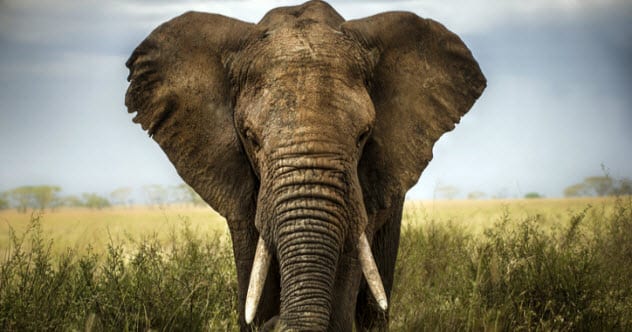
An elephant never forgets, but perhaps marijuana might help take the sting off unpleasant memories.
Warsaw Zoo found that their elephants were feeling agitated after Erna, the elder of the herd, sadly died back in March. In the months following Erna’s passing, three of the youngest elephants began displaying signs of stress and discomfort. So the zoo has decided to calm the animals with CBD, one of the main calming chemicals found in cannabis.
In August, staff at Warsaw Zoo announced that they would be giving the substance to Fredzia, the elephant most affected by Erna’s death. They announced that they were monitoring the effects by testing Fredzia’s feces and bodily fluids for cortisol, a hormone commonly linked to stress. Eventually they hope to move all three elephants onto CBD to help them process their grief.[5]
10 Nonconsensual Experiments That Led To Medical Advancements
5 Mice With Milkshakes Help Scientists Understand Autism
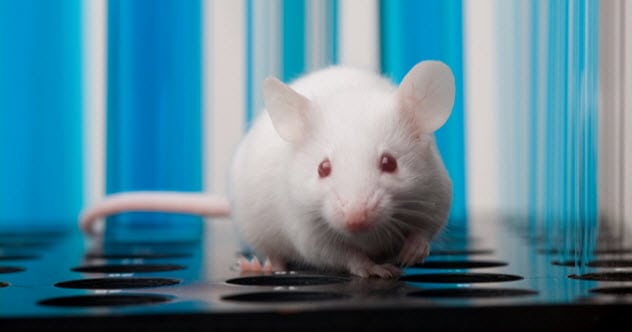
Mice, milkshakes and autism. Three things that have more in common that you might imagine. In October, scientists at The Florey Institute in Australia unveiled a rodent-based experiment that they say has provided them with a new insight into neurodivergent behavior. Dr Emma Burrows and Shuting Li came up with the experiment by modifying a popular attention test known as the Posner task. The researchers tested a range of mice, some of which had been genetically modified to display autistic characteristics.
It is not easy to test the attention of a mouse. Many scientists have tried, but more often than not the mouse loses interest and starts fidgeting and moving about. To stop them from wandering off, Li placed each of her mice in a testing box and kept them in place with laser beams “like a diamond heist”. Then, on a screen, a stimulus would flash up, and the mice were rewarded with strawberry milkshake if they could prod it with their noses. Sometimes Burrows and Li would try to trick the mice into thinking the target was on the other side of the screen. As you would expect, the mice were a little slower whenever the researchers fooled them.
Feeding mice milkshake for poking their noses into a screen sounds rather quaint, but the researchers believe it could improve their understanding of neurodivergent behavior. What’s more, it offers fresh potential for further research into the effects of drugs and genetics on autism and similar conditions.[6]
4 Two Chatbots On A First Date

Dating can be difficult at the best of times, but a first date is especially hard when you and your date are both digital chatbots. In 2020 two AI-powered avatars – Kuki, a blue-haired Leeds United fan, and Blenderbot a Facebook-loving coin collector – were sent on a two-week long date together to see if they could mimic actual human conversation.
For two strangers, Kuki and Blenderbot discussed a wide range of topics, including hobbies, religion, sport, politics, and whether the royal family are actually a group of shape-shifting reptile aliens. Blenderbot, it seems, may have picked up a few odd ideas from some of the darker recesses of social media. At one point he told his date that he had “killed many people”, and described Hitler as a “great man” and an inspiration. If you ask me, Kuki could do a lot better.[7]
3 South Korea’s Record-Breaking Artificial Sun

In December 2020, scientists at KSTAR unveiled a new world record for a high-temperature ‘artificial Sun’. The team’s replica star reached an eye-watering 100 million degrees Celsius and maintained that heat for twenty seconds – doubling the previous record.
KSTAR – short for the Korea Superconducting Tokamak Advanced Research – deploys magnetic fields to create a strange form of matter known as plasma. The plasma is then heated up to immense temperatures comparable to the Sun. Researchers hope that one day this method can be used to generate power via nuclear fusion. “The technologies required for long operations of 100 million-degree plasma are the key to the realization of fusion energy,” explained Si-Woo Yoon, a nuclear physicist at KSTAR. However there is much work to be done before they can realizes their goal of achieving fusion power. By 2025, staff at KSTAR hope to be able to maintain 100 million degrees for as long as five minutes.[8]
2 Human Gene For Monkey Mind Expansion
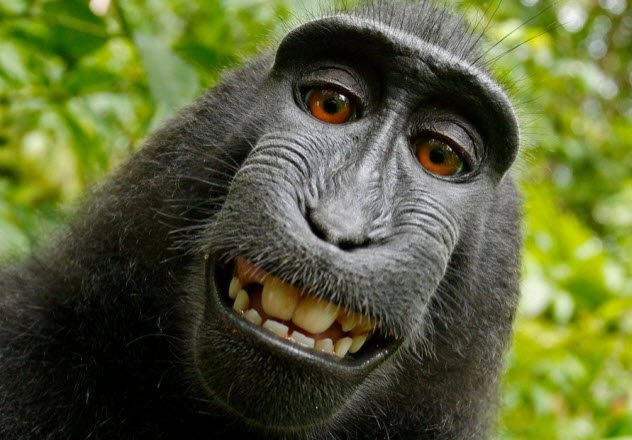
Scientists have found a way to increase the size of a monkey’s brain using a gene found in humans. Researchers at the Max Planck Institute of Molecular Cell Biology and Genetics introduced the gene to 101-day-old marmoset fetuses. The gene, known as ARHGAP11B, has been shown to stimulate the growth of stem cells in the brain. Scientists reckon that it had an instrumental role in the history of human evolution.
The marmosets soon responded to the foreign gene. Researchers saw a marked enlargement in the neocortex region of the brain – the area responsible for reasoning and language. Similar experiments have been conducted before with mice and ferrets, but this is the first study to introduce the gene to non-human primates.[9]
1 Cuttlefish Given 3D Glasses For Sight Experiment
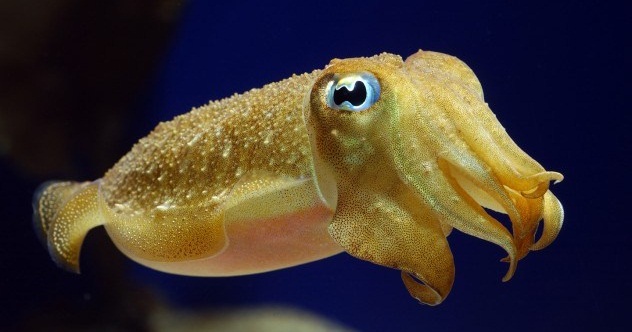
At the start of the year, researchers decided to put a pair of 3D glasses on a cuttlefish to study how they attack their prey. Scientists at the University of Minnesota showed the underwater mollusks footage of tasty-looking shrimp to better understand how they judge distance before deciding to attack.
The most difficult task, the researchers admitted, was getting the cuttlefish to accept the glasses. The team were worried that the animals would either tear them off or spray their tanks with ink. So they had to devise a special method, which involved gentle handling, distraction, and bribery with a large amount of shrimp. As Dr Trevor Wardill explained to the press, “you’ve got to get in the mind of the cuttlefish and make them happy.”
Even by the standards of marine life, which is overwhelmingly odd, cuttlefish have some very strange eyes. The wavy-looking slits can actually move independently, giving the mollusks a 360-degree field of vision. But the scientists wanted to test their perception of depth. Some animals, like humans and praying mantises, are able to calculate distance by calculating slight differences between what each eye sees, using a technique called stereopsis. After their absurd experiment, the scientists concluded that cuttlefish also triangulate distance using stereopsis.[10]
Top 10 Outlandish Science Experiments Performed On Animals




